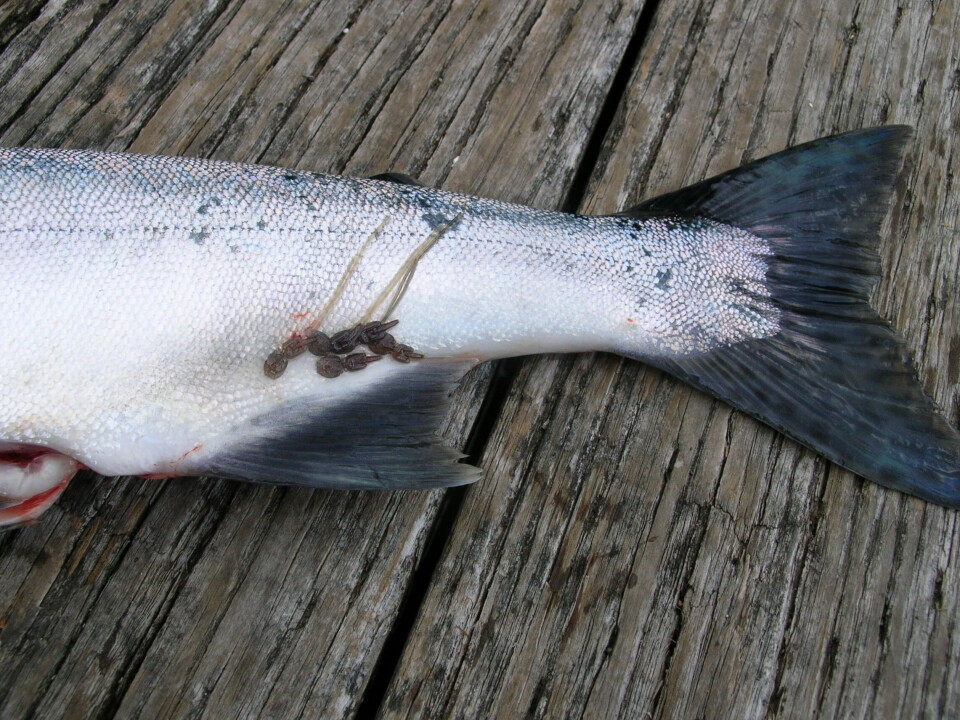
Salmon farming misinformation corrected
While the local Campbell River-based media was giving ample publicity to a rally designed to bolster political opposition against ocean farming of salmon in British Columbia and the 6,000 some jobs that the industry supports, only around fifty people showed up, among them a number of individuals and candidates from the Green Party and the traditionally anti-salmon farming New Democratic Party. Both of these parties insist on the closure of all ocean farms in favour of some sort of land-based installations. Much of the opposition to ocean net-pen salmon farming is based on the fear that sea lice from farms will harm out-migrating wild salmon juveniles- a concern that has had much more scientific validity where Atlantic salmon is found in the wild rather than in British Columbia, where no significant negative effect has been shown by years of study by government scientists.
Some of this fear mongering by the extreme segments of the environmental movement has been addressed by various representatives from the salmon farming industry in recent letters and articles in the district papers;
Mary Ellen Walling, Executive Director of the BC Salmon Farmers Association wrote in the Comox Valley Echo among else that; Sea lice management programs on our farms ensure that our operations do not become artificial harbours for these naturally-occurring marine parasites, and both water quality and benthic impacts are strictly regulated and regularly monitored, reported and inspected. We are making sure that sea farms are being run in an environmentally-responsible manner that will ensure the long-term sustainability of our industry for the North Island. The challenges faced by wild salmon are complex and need our attention. They are not assisted by those who twist information to make people fearful and ignore the complexity and simply blame salmon farming.
While researchers, regulators, private companies, stewardships groups, environmental organizations and others work to develop and implement best practices that protect the environment and enable business, a small group continues to spread misinformation about the effects of salmon. We operate under strict regulations and our operations are regularly monitored, inspected and audited to ensure we are not causing harm to the natural environment. Fear-based campaigns that suggest sinister activities do not respect the hard work of thousands of people who want the best for our environment.
And in a response to allegations that Grieg Seafood BC Ltd. is creating a risk to outmigrating salmon by starting up a previously idle salmon farm site located in Hoskyn Channel just outside Campbell River, the company’s Managing Director Stewart Hawthorn said in a release that; We do lice counts every couple of weeks and the April 7 results showed that there were only 0.1 lice per fish and there were no lice that had egg stages present. It is important that we share this information with the public so they can feel confident about this positive situation. To respond to the concerns raised about this area we have been co-operating with our farming colleagues through the BC Salmon Farmers Association (BCSFA). Every month we update what is happening with sea lice numbers at all of the farms operating in this area. This is then posted on the BCSFA web site so that everyone can check it out. This is just another example of how salmon farmers are in fact very open and transparent with respect to our operations.
And more correction of misinformation was provided in the same paper by Ian Roberts, communications and media representative for Marine Harvest Canada, where he responded to a similar allegation provided by a local reader, one Mr. Moore- stating among else that;
Mr. Moore is concerned that a salmon farm located in Hoskyn Channel (east side of Quadra Island) may threaten the survival of out-migrating Fraser River sockeye, and asks that it be removed. He suggests that the number of active farms in the area is “six farms along this waterway alone.” That is wrong – there is one – and this information has been posted publicly since February at SalmonFarmers.org. For some important context – when last year’s record run of Fraser River sockeye went to sea in 2008, there were five sites in operation in Hoskyn and Okisollo Channel. Today there is one.
Mr. Moore then states that “every single channel and passage to the north of the Straight of Georgia has salmon farms situated in them.” This is not quite true as Johnstone Strait, the largest channel of water that runs up the East side of Vancouver Island, has no salmon farms. I would kindly ask that before Mr. Moore jumps on a political campaign, that he learn about the subject he writes about and that the thousands of salmon farmers working in B.C. are awarded the common decency of fact checking before misinformation is printed in our local papers.






















































